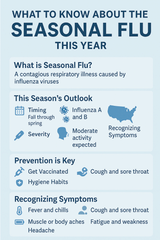Prescription Drug Costs Explained
Prescription drugs are an essential component of healthcare, providing relief from pain, curing ailments and saving lives. However, the cost of prescription drugs can often be a significant concern for patients, particularly those with chronic illnesses who require ongoing medication. In this blog post, we will explain the factors that contribute to prescription costs, how they are calculated, and provide some tips on how to save money on your medications.
Factors That Contribute to Prescription Costs
- Research and Development Costs: The process of bringing a new drug to market is lengthy and costly. The pharmaceutical company has to conduct extensive research and development, which includes clinical trials, to ensure that the drug is safe and effective. The cost of research and development is factored into the price of the drug.
- Manufacturing and Marketing Costs: Once the drug is approved, the pharmaceutical company has to manufacture it and market it to doctors and patients. These costs are also included in the price of the drug.
- Patents: When a pharmaceutical company develops a new drug, they are granted a patent, which gives them exclusive rights to sell the drug for a specific period. During this time, no other company can produce the same drug. This monopoly allows pharmaceutical companies to charge a premium for the drug.
- Insurance: Insurance companies negotiate with pharmaceutical companies to secure discounts on prescription drugs for their members. If you do not have insurance, you will have to pay the full price for the medication.
How Prescription Costs are Calculated
Pharmaceutical companies set the price of prescription drugs. They consider the costs of research and development, manufacturing and marketing, and the length of the patent. They also take into account the potential market size for the drug and the level of competition from similar drugs. The price of the drug is then negotiated with insurance companies.
How to Save Money on Your Medications
- Shop Around: The price of medications can vary significantly from one pharmacy to another. Use online price comparison tools to find the lowest price for your prescription.
- Use Generic Drugs: Generic drugs are identical to brand-name drugs in terms of dosage, safety, strength, quality, and intended use. They are also significantly cheaper. Ask your doctor or pharmacist if there is a generic version of your medication.
- Ask for Samples: Pharmaceutical companies often provide samples of new medications to doctors. Ask your doctor if they have any samples that you can try before filling a prescription.
- Use Prescription Discount Cards: Prescription discount cards can provide significant savings on prescription drugs. You can find these cards online or through your insurance provider.
Conclusion
Prescription drugs are essential for maintaining good health, but they can be costly. The price of prescription drugs is influenced by research and development costs, manufacturing and marketing costs, patents, and insurance. To save money on your medications, shop around, use generic drugs, ask for samples, and use prescription discount cards. By being informed and proactive, you can reduce your prescription costs and stay healthy.
Truway Health News & Insights
Breathe, Refuel, Recharge: Finding Your Daily Balance
Written by Perry JohanssenPublished and Edited by Truway Health Life rarely slows down on its own. B...
Truway Health Launches “ImmuneNet”: A New Era in Quantum-Synaptic Immunotherapy
Reimagining How Immunity Can Be Understood and Guided At Truway Health, innovation never sleeps.Toda...
Announcing the HEALTH Trial: Humanoid Evaluation and Learning in Healthcare
Published by Truway Health, Inc.Principal Investigator: Gavin SolomonClinicalTrials.gov Identifier:...
We’re thrilled to launch our first-ever clinical trial of TruDxPc
Study Identification Protocol ID: TRHW-DX-001 Brief Title: Truway Diagnostic Tools in Primary Ca...
What to Know About the Seasonal Flu This Year
As cooler weather sets in, flu season returns. Each year brings new strains, evolving guidance, and...
Gamification and Health: Turning Wellness Into a Daily Game
Introduction For many people, staying healthy feels like a chore: eating clean, exercising regularly...







